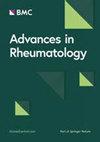社区老年人骨质疏松性髋部骨折的风险因素:真实世界证据研究
IF 2
4区 医学
Q3 RHEUMATOLOGY
引用次数: 0
摘要
老年人髋部骨折会增加发病率和死亡率。虽然低骨矿物质密度被认为是主要的风险因素,但认识到可能影响髋部骨折风险的其他因素也很重要。本研究旨在评估社区老年人的临床特征、患者报告的结果以及肌肉和有氧运动能力对髋部骨折的影响。这是一项回顾性队列研究,采用的是2019年5月1日至2022年8月22日期间在巴西米纳斯吉拉斯州门诊就诊的≥60岁受试者的真实数据。临床特征(多病症、长期用药、镇静剂和三环类药物、跌倒次数)、患者报告结果(自我健康感知、自我报告行走困难、自我报告视力问题和自我报告跌倒)以及肌肉和有氧能力(小腿围度、体重指数和步速)等数据均来自电子健康记录。在对年龄和性别进行调整后,通过多变量逻辑回归分析研究了各潜在风险因素与髋部骨折的关系。研究共纳入 7836 名老年人,中位年龄为 80 岁(IQR 72-86),其中女性 5702 人(72.7%)。121名(1.54%)患者发生了髋部骨折。多病症与髋部骨折风险增加有关(OR = 1.12,95%CI 1.06-1.18),每次跌倒都会使髋部骨折的几率增加 1.7 倍(OR = 1.69,95%CI 1.52-1.80)。与骨折风险增加相关的患者报告结果有:经常或自我感觉健康不佳(OR = 1.59,95%CI 1.06-2.37)、自我报告行走困难(OR = 3.06,95%CI 1.93-4.84)和自我报告跌倒(OR = 2.23,95%CI 1.47-3.40)。体重指数和小腿围与髋部骨折成反比(OR = 0.91,95%CI 0.87-0.96 和 OR = 0.93,95%CI 0.88-0.97),而缓慢的步速会使髋部骨折的几率增加近两倍(OR = 1.80,95%CI 1.22-2.66)。除了骨矿密度和现有的骨折风险评估工具外,我们的研究还强调了在社区居住的老年人中识别髋部骨折风险因素的重要性。在初级保健中获得的数据可以帮助医生、其他卫生专业人员和公共卫生政策识别髋部骨折风险增加的患者。本文章由计算机程序翻译,如有差异,请以英文原文为准。
Risk factors for osteoporotic hip fracture among community-dwelling older adults: a real-world evidence study
Hip fractures in the older adults lead to increased morbidity and mortality. Although a low bone mineral density is considered the leading risk factor, it is essential to recognize other factors that could affect the risk of hip fractures. This study aims to evaluate the contribution of clinical characteristics, patient-reported outcomes, and muscle and aerobic capacity for hip fractures in community-dwelling older adults. This is a retrospective cohort study with real world-data from subjects ≥ 60 years old attending an outpatient clinic in Minas Gerais, Brazil, from May 1, 2019, to August 22, 2022. Data about clinical characteristics (multimorbidity, medications of long-term use, sedative and or tricyclic medications, number of falls), patient-reported outcomes (self-perception of health, self-report of difficulty walking, self-report of vision problems, and self-report of falls) and muscle and aerobic capacity (calf circumference, body mass index, and gait speed) were retrieved from an electronic health record. The association of each potential risk factor and hip fracture was investigated by a multivariable logistic regression analysis adjusted for age and sex. A total of 7,836 older adults were included with a median age of 80 years (IQR 72–86) and 5,702 (72.7%) were female. Hip fractures occurred in 121 (1.54%) patients. Multimorbidity was associated with an increased risk of hip fracture (OR = 1.12, 95%CI 1.06–1.18) and each episode of fall increased the chance of hip fracture by 1.7-fold (OR = 1.69, 95%CI 1.52–1.80). Patient-reported outcomes associated with increased fracture risk were regular or poor self-perception of health (OR = 1.59, 95%CI 1.06–2.37), self-report of walking difficulty (OR = 3.06, 95%CI 1.93–4.84), and self-report of falls (OR = 2.23, 95%CI 1.47–3.40). Body mass index and calf circumference were inversely associated with hip fractures (OR = 0.91, 95%CI 0.87–0.96 and OR = 0.93, 95%CI 0.88–0.97, respectively), while slow gait speed increased the chance of hip fractures by almost two-fold (OR = 1.80, 95%CI 1.22–2.66). Our study reinforces the importance of identified risk factors for hip fracture in community-dwelling older adults beyond bone mineral density and available fracture risk assessment tools. Data obtained in primary care can help physicians, other health professionals, and public health policies to identify patients at increased risk of hip fractures.
求助全文
通过发布文献求助,成功后即可免费获取论文全文。
去求助
来源期刊

Advances in Rheumatology
Medicine-Rheumatology
CiteScore
4.00
自引率
4.30%
发文量
41
审稿时长
53 weeks
期刊介绍:
Formerly named Revista Brasileira de Reumatologia, the journal is celebrating its 60th year of publication.
Advances in Rheumatology is an international, open access journal publishing pre-clinical, translational and clinical studies on all aspects of paediatric and adult rheumatic diseases, including degenerative, inflammatory and autoimmune conditions. The journal is the official publication of the Brazilian Society of Rheumatology and welcomes original research (including systematic reviews and meta-analyses), literature reviews, guidelines and letters arising from published material.
 求助内容:
求助内容: 应助结果提醒方式:
应助结果提醒方式:


